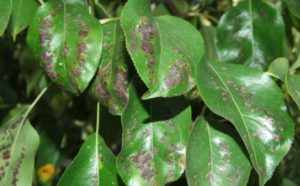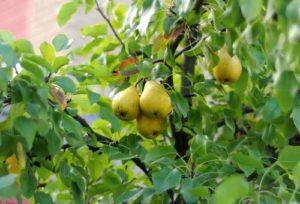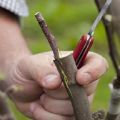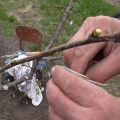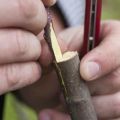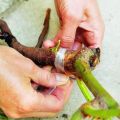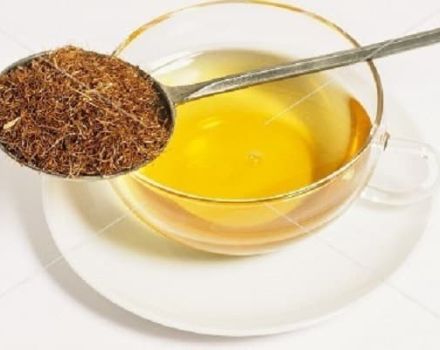How and when is it better to plant a pear with fresh cuttings step by step for beginners
In areas with unstable climatic conditions, it is easy to grow a pear, which will delight you with large, high quality fruits. To do this, graft it yourself on a picky plant. Before proceeding with the procedure, you should understand the important nuances and learn how to properly plant a pear. An important role is played by the season and the quality of the tree with which they decided to combine the pear.
Pear grafting goals
Possible goals of vaccination:
- Vaccination is used if you want to prolong the youth of your favorite variety.
- If you don't want to wait several years to taste the harvest. The seedlings will delight with the first fruits in at least 4 years. But vaccination will significantly speed up the process.
- The plant is grafted to give it the properties of the best variety. It happens that gardeners are not always satisfied with a growing tree that gives tasteless or medium-sized fruits.
- Carried out to develop a new variety. By combining different varieties, a seedling is obtained that inherits the best properties of both plants.
What trees can you graft on?
Nurseries like to use a dwarf or semi-dwarf stock. This is due to the speed and ease of reproduction. The resulting plant is allowed to be planted in an area with a close location of groundwater.
Various cultivated plants can serve as a stock. Let's consider the best options.
For a different kind of pear
A pear can be grafted onto the same plant. You can not graft on a pear that has a ripening period. This will shorten the life cycle of the tree..

Tips:
- They are grafted onto semi-cultivated pear varieties that are grown in our climate. On these trees, the scion will grow together better and will develop successfully.
- If a late variety is grafted onto an early pear, then by winter the plant will still bear fruit. As a result, there is a high probability that the first frosts will completely destroy the tree.
- The Ussuriyskaya pear will serve well as a stock. You get a new winter-hardy culture. But not all varieties take root well on this rootstock, so you have to tinker with the grafting.
On a mountain ash
A culture grafted onto black chokeberry will produce a plant with high frost resistance. Late pear varieties can be grafted onto it without fear. The new tree will be compact, which will facilitate easy harvesting. During the vaccination, a fourth of the rowan shoots is left.This is a prerequisite, otherwise the plant will not receive the necessary amount of nutrients for fruiting. On a new tree, the fruit will acquire a tart and rather sweet taste.
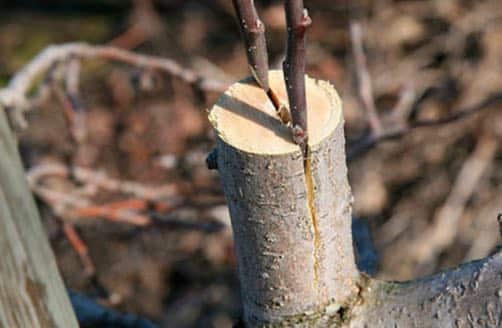
On a wild pear
If you use wild, then thanks to the vaccination, it will be possible to get a full-fledged pear with remarkable characteristics in a short period of time.
On quince
Having grafted onto this plant, the result is a low-growing crop. The pear will bear fruit early and have a weak frost resistance. Therefore, this option is not suitable for regions with severe winters and late spring frosts. There is a high probability that the crop will never appear.
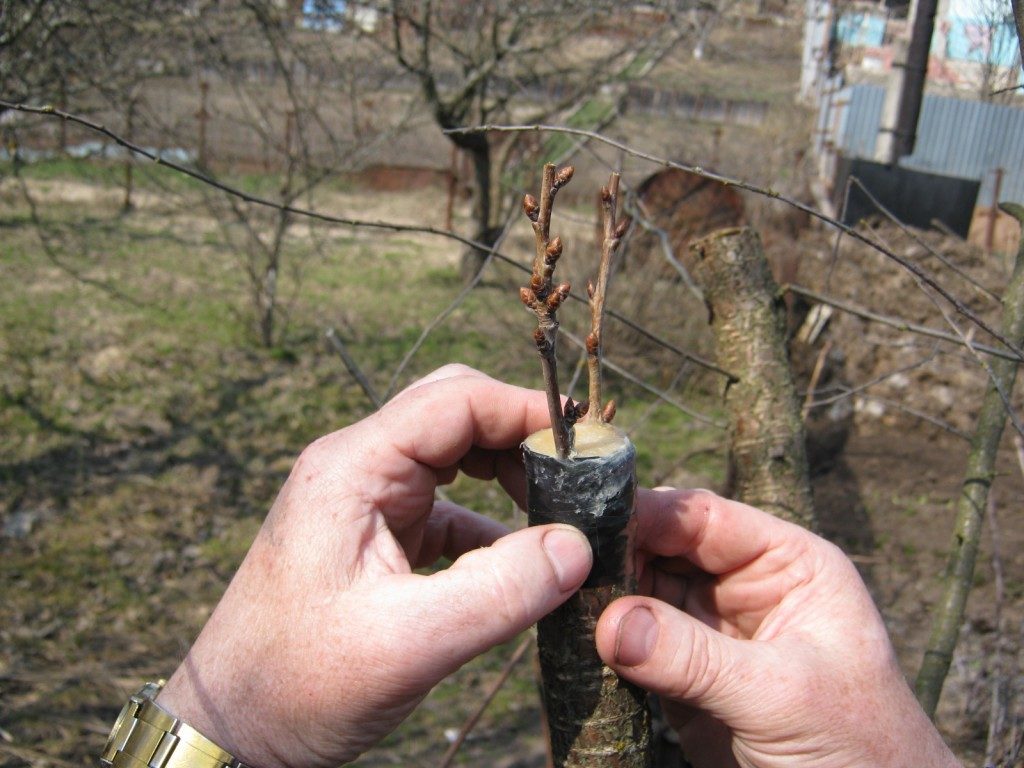
But in temperate climates or with good shelter in cold areas, a compact tree will grow, giving maximum results.
The fruits will acquire a new, unusual flavor that everyone will appreciate.
On the plum
It is better to plant on wild plum. It is highly resistant to harsh climates. Therefore, the new tree will grow resistant to bad weather conditions and severe frosts.
To the apple tree
Grafting will create an unusual tree. As a result, apple and pear branches will be located on the plant. Based on practice, vaccinations do not always take root. But the attempts are worth it.

On irgu
Vaccination for irgu is popular. As a result, the gardener gets the fruits of the original taste and an excellent fruiting plant that gives an early, maximum yield. Vaccination should be done low. Height is no more than 20 centimeters. Otherwise, branches will often break off due to the weight of pears and winds. The plant begins to bear fruit in the second year.
Optimal timing of the procedure
They can be different:
- Autumn. The grafting is carried out using cuttings, which were prepared in the spring. They need to germinate 1-2 months before the onset of frost.
- In summer, you can graft with fresh cuttings. A favorable time comes in July. But if during this period it is not possible to get vaccinated, then you should not be upset. Summer vaccination can also be carried out in August.
- In the spring. For this, cuttings are harvested in the fall. They are placed in a dark, cool place, and the ends are covered with wet sawdust. The procedure is carried out in the second half of spring, but before the start of sap flow. This will provide a high survival rate.

How is the scion selected?
The pear is grafted with a handle. They must be annual. They are taken only from the upper well-lit part of the crown. Harvested in the last decade of autumn, but before the onset of frost. The buds on the scion should be well developed. Also pay attention to the fact that it is biologically and anatomically suitable for the stock.
The graft should be young and healthy - this will significantly increase the chances of success.
Vaccination methods
There are various vaccination technologies. Each method should be examined in more detail.
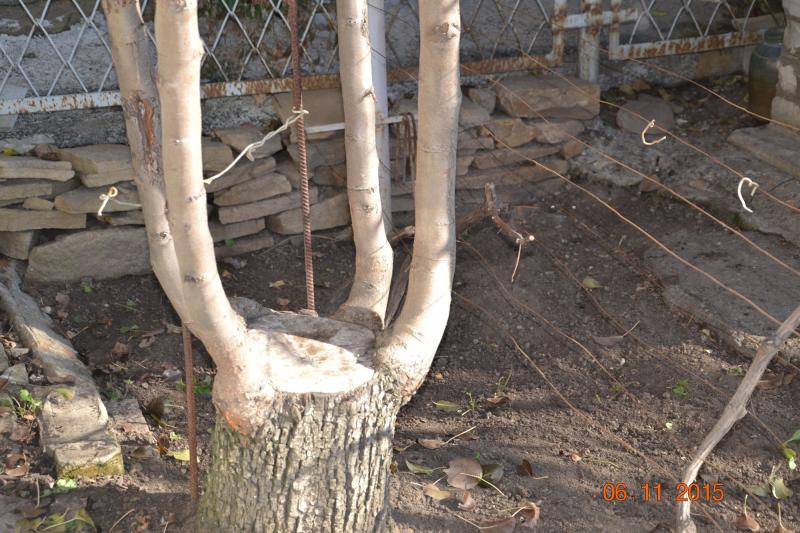
Copulation
This method is used when the thickness of the branches is the same. For this, the places of the cuts are connected and tied tightly. Process:
- The cut is made oblique. To do this, use a sharp garden knife.
- The shoot is chosen of the appropriate diameter and strong. A small stalk is cut.
- The bottom of the cut should be the same size as on the grafted tree. When the slices are prepared, do not touch them with your hands.
- Attach the cutting so that the two plants connect.
- Tie and secure with tape.
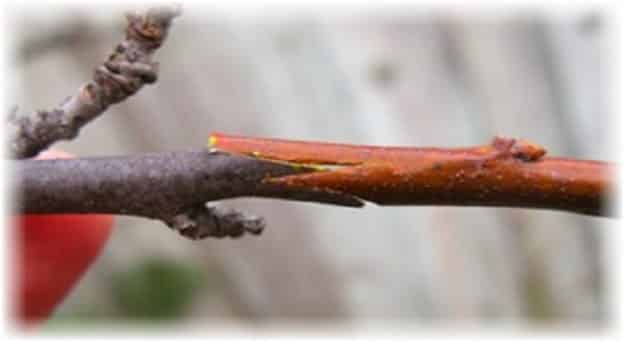
Into the cleft
This method is the most popular. Algorithm of actions:
- The scion diameter is chosen several times smaller than the rootstock thickness. The technology helps to simplify splices and increase success rates.
- The stock is cut with a sharp secateurs. A split is made in the center of the hemp with a knife. The depth will be about 5 centimeters. For the scion, cut the lower part of the branch, which will look like a wedge, and insert it into the split.
- They smear around with garden varnish and tie the places of contact with a film. After 3 months, it is removed.
Usually old trees are planted. This procedure helps to rejuvenate the plant and restore its fruiting. Also extends the life of the culture.
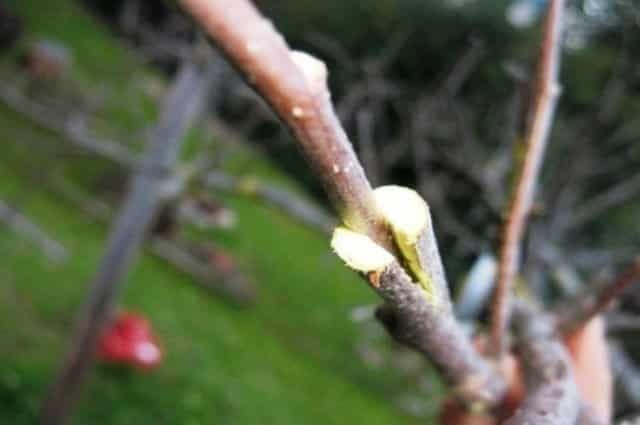
Budding
Algorithm of actions:
- Inoculation is carried out using a kidney attached to the rootstock shoots.
- It is enough to make a small incision on the rootstock stem, attach the scion and wrap tightly.
For inoculation with an eye, you can use the material harvested last year.
For the bark
A distinctive feature of this method is its ease of implementation. Recommended for beginner gardeners:
- Using a sharp knife, a cut is made on the rootstock, which should be vertical. Length 3 centimeters.
- The resulting incision is pushed back and a scion with a bare cambium is placed in the resulting free space.
- An important point to consider is that there should be 2 swollen buds on the scion.
- Grease the connection with a pitch, then wrap it up using polyethylene.
- After 3 months, the junction will overgrow. Leaves form on the scion, and soon a sprawling, well-fruiting tree will grow from it.
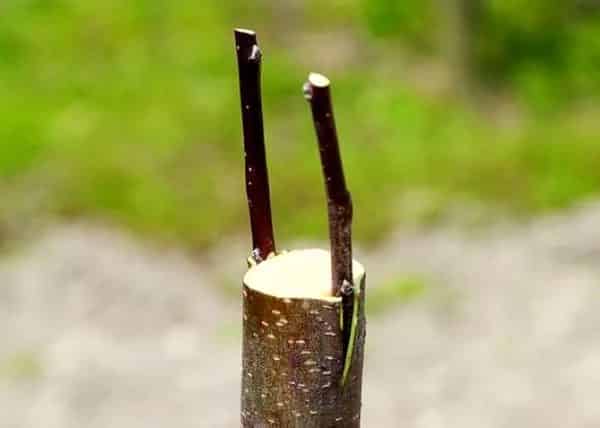
Side cut
Basic actions:
- At the bottom, cut off the stalk so that the result is a uniform wedge.
- At the side of the rootstock, make the same size cut as the wedge.
- Connect the two parts. Smear with garden var.
- Tape the vaccination site with tape.
The procedure is carried out in April.
By the bridge
This method is used if the bark has been damaged by hares. A special bridge helps restore nutrition to the crown and revive the tree. Process:
- In the damaged area, parallel cuts are made in the bark. The size is about 3 centimeters.
- Cuttings that have been prepared in advance are inserted into the resulting places, and coated with var.

Ablactation
The method is aimed at saving a mature tree. The time of the event is May. The rootstock and the scion are connected by closeness. Sequence:
- Cut off the bark into the scion and rootstock of the same length.
- Bring the parts closer so that they connect.
- Coat the joints with plasticine and wrap with a tourniquet.
- Remove the tourniquet after 3 months. Cut off the shoots, then detach the rootstock branch.

Vaccination step by step
For beginner gardeners, the budding method is best suited. To avoid mistakes, you must follow the detailed description:
- For the stock, a young seedling is used, which can be purchased in a specialized nursery.
- The procedure is carried out in the last days of July. You can also vaccinate in the first decade of August.
- Rake off the soil around the rootstock stem so that a root collar appears.
- Remove all branches at a height of 11 centimeters from the soil and wipe with a damp cloth.
- Use a sharp knife to make a T-cut. Length 3 centimeters.
- Now you need to properly prepare the cuttings. To do this, use a cut from a varietal plant and cut off a developed bud. The adjacent fabric (flap) will also need to be trimmed. The scutellum is made the same length as the cut in the rootstock.
- Move the T-cut with the edge of the knife. Place the handle there and press firmly with your finger.
- Tie the handle to the stem with electrical tape. Wind in such a way as to completely cover the flap, but leave the kidney.
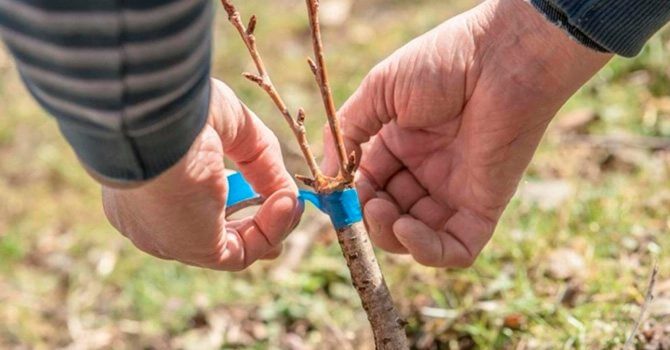
Care after vaccination
To vaccinate a plant is half the battle, the main thing is to provide proper care after that:
- After 3 weeks, the plant is examined. If the kidney is green and has not dried out, then the procedure was performed correctly and the vaccine took root.
- Remove the harness before winter cold. But if the electrical tape does not pinch the tissue of the culture, then it is better to postpone this process until the onset of spring and remove it after the snow melts.
- Before the buds swell in spring, the stock should be cut slightly above the graft and covered with garden varnish.
- The plant is watered all season, and the trunk circle is loosened. Weeds are also constantly removed.
- A year later, the culture is transplanted to a permanent place.
Frequent mistakes
The most common mistakes beginners make are:
- Poorly fixed stalk. It should fit snugly against the base.
- Incorrectly selected stock. Winter-hardy plants should be chosen.
- Incorrectly prepared cuttings. They are harvested in the fall. Cut off early will not mature or take root. Harvested after frost - will freeze.
- The procedure was carried out for a long time. Vaccination must be done quickly.
If the kidney vaccination method is chosen, then attention is paid to its condition. If it has dried out or changed color, then it cannot be used for the procedure.
